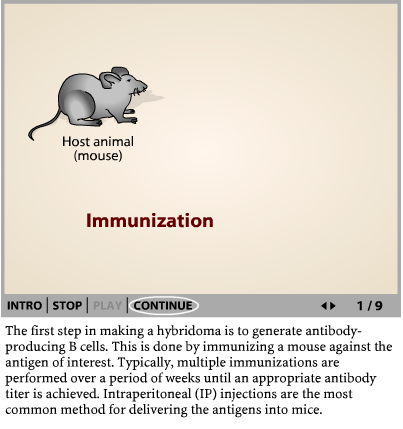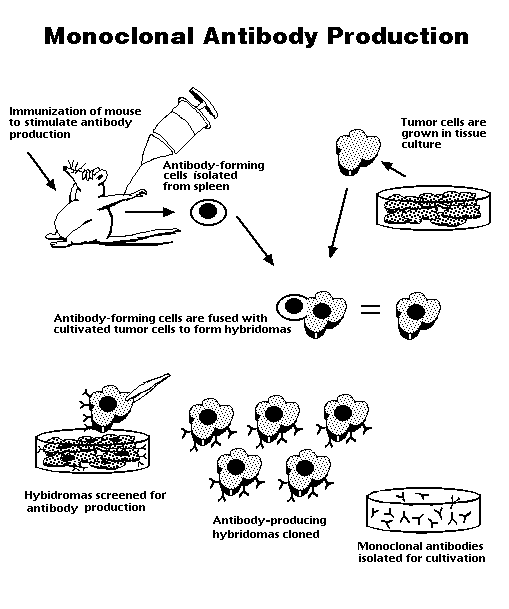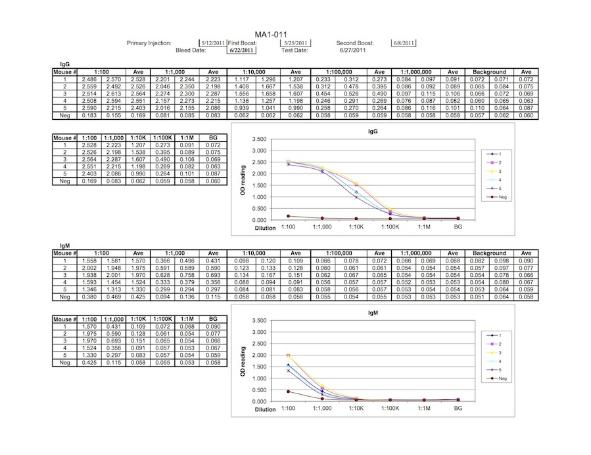Step by step process: Click the image to view the step by step video. |
What is the process used for Monoclonal Antibodies?
First they take samples of tumor cells and process them to find antigens that are located on the surface of that cell to which the antibodies bind and eventually kill the cancer.
In order for this process to work, a large quantity of antigens that are unique to the tumor cells must be present. Plus the antigen should be different enough from those that are elaborated by normal cells to provoke an antibody response. The antibodies made by this method can be used to kill cancer cells, or used as a carriers of other substances used either for treatment or diagnostic purposes. Chemotherapeutic agents can be attached to monoclonal antibodies to deliver high amounts of toxic substances directly a tumor cells. The approach is less toxic and highly effective than conventional chemo because it reduces the harmful agents. Monoclonal antibodies have proven helpful in treatment such as leukemia and lymphoma. As well as the development for the use against solid tumors. These antibodies have multiple potential applications such as nuclear imaging, surgical mapping, and much more.
|
|||||||
The Different Antibodies? Conjugated MAbs (monoclonal antibodies) can be referred to as tagged, labeled, or loaded antibodies. They are divided into groups depending on their function:
|
||||||||




.jpg)

